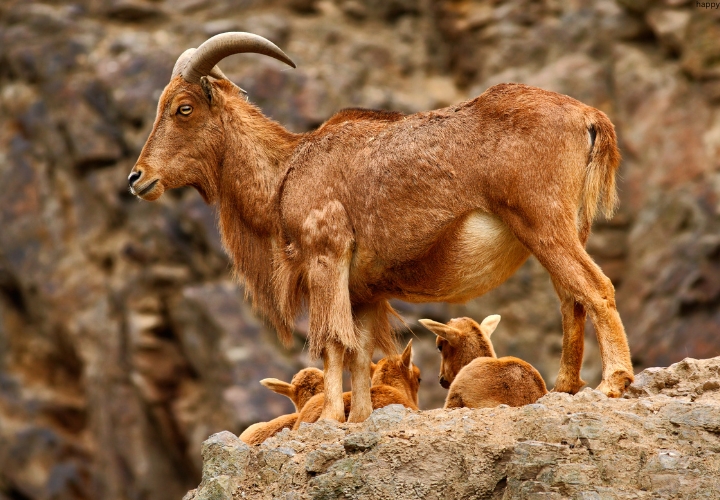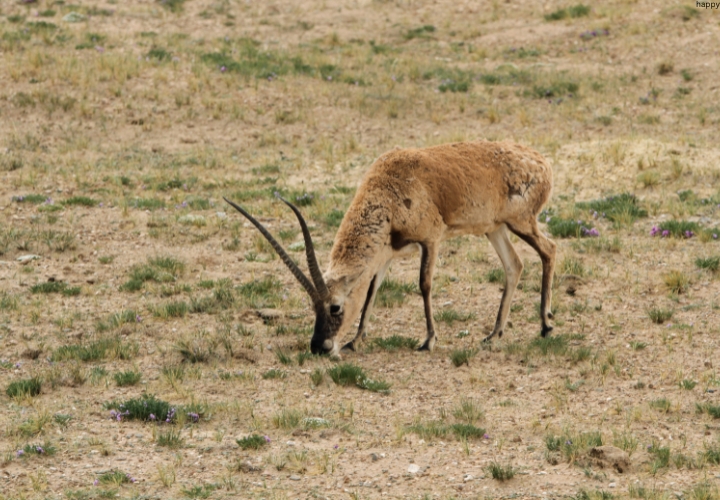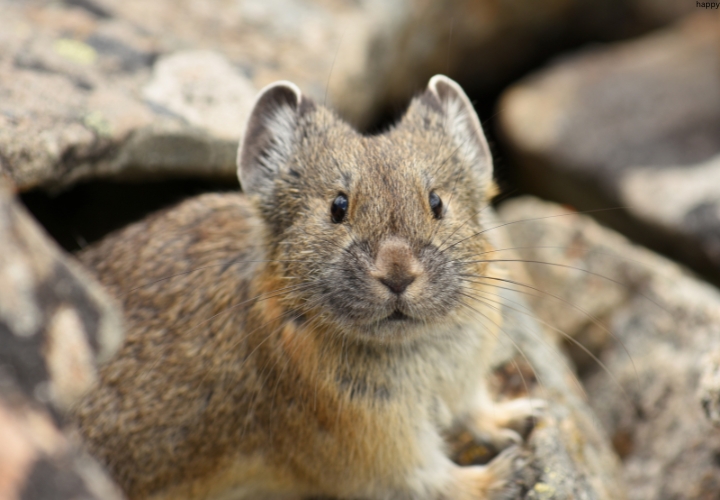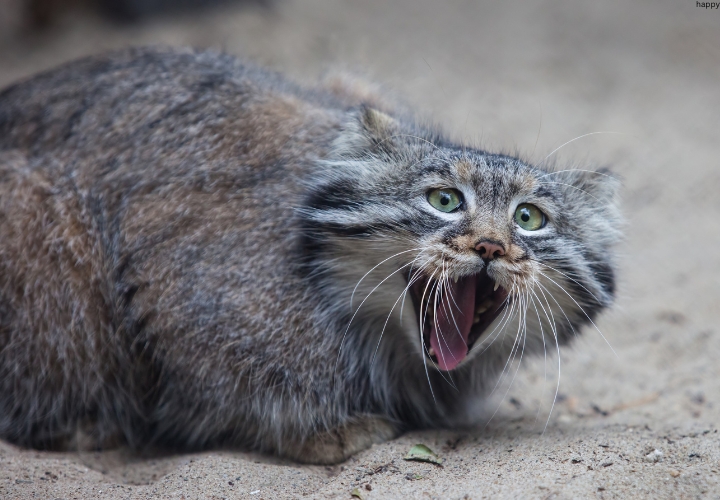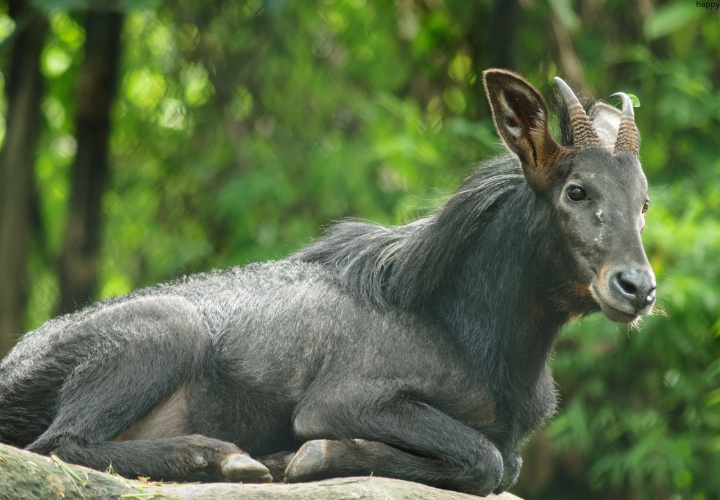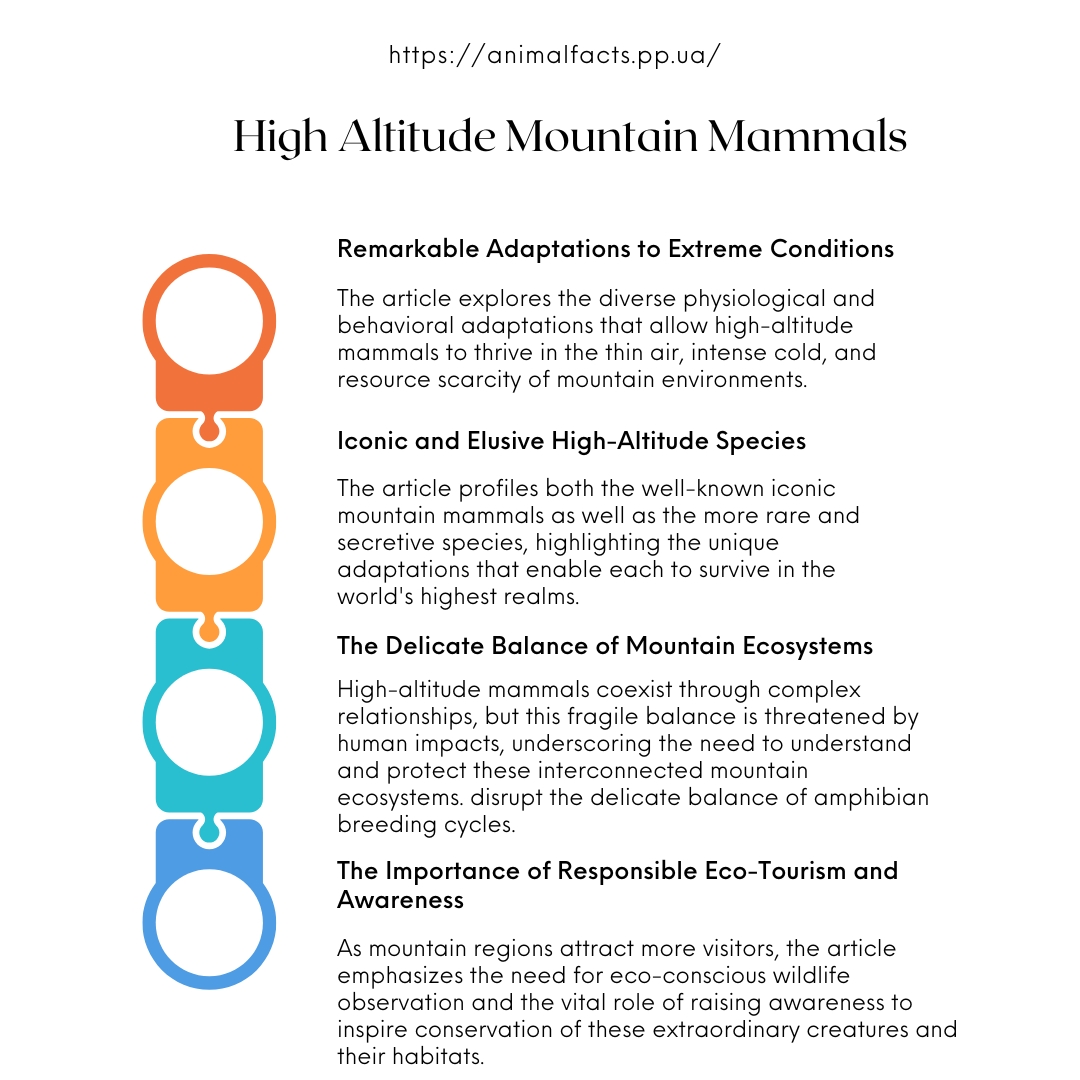The world’s highest mountain ranges are home to a remarkable array of wildlife that has evolved ingenious adaptations to survive in these extreme environments.
From the snow-capped peaks to the rugged alpine meadows, a diverse assortment of mammals has found ways to thrive at dizzying elevations where the air is thin and the temperatures can plummet.
Exploring the extraordinary creatures that inhabit these lofty realms, this article delves into the physiological and behavioral adaptations that enable high-altitude mammals to overcome the unique challenges of living at the roof of the world.
We’ll meet iconic species like the Himalayan tahr and snow leopard, as well as rare and elusive denizens of the mountains, while also examining how these remarkable animals coexist and the importance of responsible eco-tourism and conservation efforts to protect their fragile habitats.
By cultivating a deeper appreciation for these high-altitude marvels, we can inspire action to safeguard the future of the world’s most extraordinary mountain dwellers.
Key Takeaways:
- High-altitude mammals have evolved remarkable physiological and behavioral adaptations to thrive in the extreme conditions of the world’s tallest mountain ranges, including increased red blood cells, enhanced oxygen utilization, specialized thermoregulation, and diverse foraging strategies.
- Iconic high-altitude mammals like the Himalayan tahr, Tibetan antelope, Himalayan brown bear, snow leopard, and Himalayan marmot have all developed unique adaptations to survive in these challenging environments.
- In addition to the well-known species, the mountains are also home to a number of rare and elusive mammals such as the markhor, Andean mountain cat, Pallas’s cat, Himalayan musk deer, Himalayan serow, and Yunnan snub-nosed monkey.
- High-altitude mammals coexist through resource partitioning, predator-prey relationships, and cooperative behaviors, though this delicate balance is threatened by human-induced pressures like climate change and habitat fragmentation.
- Responsible eco-tourism and wildlife observation practices are crucial to minimize disturbance and support conservation efforts, while spreading awareness and appreciation for these extraordinary creatures can inspire action to protect mountain ecosystems.
Adapting to Extreme Altitudes
The world’s highest mountain ranges, such as the Himalayas, Andes, and Rocky Mountains, are home to an incredible array of wildlife that has evolved remarkable adaptations to survive in these extreme environments.
From the snow-capped peaks to the rugged alpine meadows, a diverse assortment of mammals has found ways to thrive at dizzying elevations where the air is thin and the temperatures can plummet.
Living at high altitudes presents a unique set of challenges for these mountain dwellers. The reduced oxygen levels, intense UV radiation, and harsh weather conditions require specialized physiological and behavioral adaptations.
Let’s explore some of the key ways in which high-altitude mammals have adapted to these extreme conditions.
1. Physiological Adaptations
- Increased Red Blood Cells: Many mountain mammals, such as the Tibetan antelope and Himalayan tahr, have developed an increased number of red blood cells to more efficiently transport oxygen throughout their bodies. This allows them to function at reduced oxygen levels.
- Enhanced Oxygen Utilization: Adaptations like larger lung capacities, more efficient hemoglobin, and specialized muscle fibers help high-altitude species extract and use oxygen more effectively.
- Thermoregulation: Thick fur, layers of fat, and specialized circulatory systems enable these animals to retain body heat and regulate their temperature in the face of extreme cold.
- Specialized Digestive Systems: The unique diets of high-altitude mammals, often consisting of hardy alpine plants, require specialized digestive systems to extract nutrients and energy from these nutrient-poor food sources.
2. Behavioral Adaptations
- Mobility and Migration: Many high-altitude mammals, such as the snow leopard and Himalayan brown bear, are adept at navigating the rugged terrain and can cover vast distances to find resources and suitable habitats.
- Seeking Shelter: These animals have learned to seek out protected areas, such as rock crevices, caves, and burrows, to shield themselves from the harsh weather and predators.
- Foraging Strategies: High-altitude species have developed efficient foraging strategies to locate and exploit the limited food sources available in their environments, often relying on a diverse range of plant and animal matter.
- Social Behavior: Some high-altitude mammals, like the Himalayan marmot, exhibit complex social structures and behaviors that help them cooperate, communicate, and survive in their challenging habitats.
Key High-Altitude Mammal Adaptations
| Adaptation | Description |
|---|---|
| Increased Red Blood Cells | Many mountain mammals have developed an increased number of red blood cells to more efficiently transport oxygen at high altitudes. |
| Enhanced Oxygen Utilization | Adaptations like larger lung capacities, more efficient hemoglobin, and specialized muscle fibers help high-altitude species extract and use oxygen more effectively. |
| Thermoregulation | Thick fur, layers of fat, and specialized circulatory systems enable these animals to retain body heat and regulate their temperature in the face of extreme cold. |
| Specialized Digestive Systems | The unique diets of high-altitude mammals require specialized digestive systems to extract nutrients and energy from nutrient-poor food sources. |
| Mobility and Migration | Many high-altitude mammals are adept at navigating the rugged terrain and can cover vast distances to find resources and suitable habitats. |
| Seeking Shelter | These animals have learned to seek out protected areas, such as rock crevices, caves, and burrows, to shield themselves from the harsh weather and predators. |
| Foraging Strategies | High-altitude species have developed efficient foraging strategies to locate and exploit the limited food sources available in their environments. |
| Social Behavior | Some high-altitude mammals exhibit complex social structures and behaviors that help them cooperate, communicate, and survive in their challenging habitats. |
Iconic High-Altitude Mammals
The world’s highest mountain ranges are home to a remarkable diversity of mammalian species, each with its own unique adaptations and behaviors. Let’s take a closer look at some of the most iconic and captivating high-altitude mammals.
1. Himalayan Tahr
The Himalayan tahr is a sure-footed, goat-like animal that thrives in the rugged, steep terrain of the Himalayan mountains.
These agile climbers are equipped with specialized hooves and can effortlessly navigate the treacherous slopes and rocky outcroppings of their alpine habitats.
Himalayan tahrs are known for their distinctive shaggy coats, which provide insulation against the cold temperatures and protection from the harsh weather.
2. Tibetan Antelope (Chiru)
The Tibetan antelope, also known as the chiru, is a graceful and nimble species that has adapted to the harsh conditions of the Tibetan Plateau.
These animals are renowned for their remarkable migratory patterns, covering vast distances across the high-altitude grasslands and tundra in search of the best grazing grounds.
Chiru have developed specialized adaptations, such as thick, warm fur and the ability to withstand extreme cold, that allow them to survive in this unforgiving environment.
3. Himalayan Brown Bear
The Himalayan brown bear is a formidable predator that has learned to thrive in the high-altitude ecosystems of the Himalayas.
These bears have developed a range of adaptations, including increased muscle mass, enhanced insulation, and larger paws, that enable them to navigate the rugged terrain and harsh weather conditions.
Himalayan brown bears are known for their omnivorous diet, which includes a variety of plant matter, small mammals, and even high-altitude carrion.
4. Snow Leopard
The snow leopard is a truly remarkable and elusive feline that calls the Himalayan mountains home. These graceful predators have evolved a range of adaptations that allow them to seamlessly blend into their snowy, rocky environments.
Snow leopards have thick, spotted fur, large paws with fur-lined soles, and long tails that provide balance and stability as they traverse the steep, icy slopes.
These cats are renowned for their impressive leaping abilities, which they use to ambush their prey from the cliffs and rocky outcroppings that dot the high-altitude landscapes.
5. Pika
The pika is a small, rabbit-like mammal that has found a way to thrive in the rugged, high-altitude environments of the Himalayas, Rocky Mountains, and other mountain ranges.
These resilient creatures are known for their distinctive vocalizations, which they use to communicate with their fellow pikas and warn of predators.
Pikas have developed a range of adaptations, including a compact, rounded body shape and a dense, insulating coat of fur, that allow them to withstand the cold temperatures and limited resources of their alpine habitats.
6. Himalayan Marmot
The Himalayan marmot is a large, ground-dwelling rodent that has adapted to the harsh conditions of the high-altitude regions of the Himalayas.
These social creatures live in burrow systems and are known for their distinctive whistle-like calls, which they use to communicate with their fellow marmots.
Himalayan marmots have developed a range of adaptations, including a thick, insulating coat of fur and the ability to hibernate for extended periods, that enable them to survive the extreme cold and limited food sources of their high-altitude homes.
Rare and Elusive Residents of the Mountains
In addition to the iconic high-altitude mammals, the world’s highest mountain ranges are also home to a number of rare and elusive species that have managed to eke out an existence in these extreme environments.
1. Markhor
The markhor is a majestic, spiral-horned wild goat that inhabits the rugged mountains of Central Asia, including the Hindu Kush and Karakoram ranges.
These sure-footed creatures are known for their impressive climbing abilities, which they use to navigate the steep, rocky terrain of their high-altitude habitats.
Markhor have developed a range of adaptations, including thick, insulating fur and specialized hooves, that allow them to thrive in the harsh conditions of their mountain homes.
2. Andean Mountain Cat
The Andean mountain cat is a elusive feline that calls the high-altitude regions of the Andes mountains home. These small, stocky cats are known for their distinctive spotted coats, which help them blend seamlessly into the rocky, snowy environments of their habitats.
Andean mountain cats are skilled hunters, using their sharp senses and agility to ambush small rodents and other prey in the challenging terrain of the Andes.
3. Pallas’s Cat
Pallas’s cat, also known as the manul, is a small, stout-bodied feline that has adapted to the harsh conditions of the high-altitude regions of Central Asia, including the Himalayas and Tibetan Plateau.
These cats are known for their distinctive, rounded faces and thick, dense fur, which provide insulation and camouflage in their snowy, rocky environments.
Pallas’s cats are skilled hunters, using their excellent night vision and stealth to pursue small mammals and birds in the rugged terrain of their high-altitude homes.
4. Himalayan Musk Deer
The Himalayan musk deer is a small, elusive creature that inhabits the high-altitude forests and alpine meadows of the Himalayas.
These deer are known for their distinctive, elongated canine teeth, which they use to defend their territories and attract mates.
Himalayan musk deer have developed a range of adaptations, including a compact, agile body and the ability to move silently through dense vegetation, that allow them to thrive in the challenging conditions of their mountain habitats.
5. Himalayan Serow
The Himalayan serow is a large, goat-like mammal that inhabits the rugged, forested slopes of the Himalayas. These animals are known for their distinctive, shaggy coats, which provide insulation against the cold temperatures and protection from the harsh weather conditions of their high-altitude homes.
Himalayan serows are skilled climbers, using their strong, agile legs to navigate the steep, rocky terrain of their mountain habitats.
6. Yunnan Snub-Nosed Monkey
The Yunnan snub-nosed monkey is a rare and elusive primate that calls the high-altitude forests of the Hengduan Mountains in southwestern China home.
These unique primates are known for their distinctive, upturned noses and their thick, fur coats, which help them thrive in the cold, damp conditions of their mountain habitats.
Yunnan snub-nosed monkeys are highly social creatures, living in large, complex troops that work together to navigate the challenging terrain and find food in their high-altitude homes.
Shared Habitats and Coexistence
The world’s highest mountain ranges are home to a rich tapestry of life, where a diverse array of high-altitude mammals coexist and share the same challenging environments.
These animals have evolved complex relationships and survival strategies to thrive in these extreme conditions.
One of the key ways in which high-altitude mammals coexist is through the partitioning of resources. While many species may occupy the same general habitat, they have developed specialized adaptations and behaviors that allow them to exploit different niches and food sources.
For example, the Himalayan tahr and Himalayan marmot may both inhabit the rocky slopes and alpine meadows of the Himalayas, but the tahr is primarily a grazer, while the marmot is more of an omnivore, feeding on a variety of plant matter and small invertebrates.
In addition to resource partitioning, high-altitude mammals also rely on a range of interspecific interactions to survive.
Predator-prey relationships, such as the snow leopard’s pursuit of the Tibetan antelope, play a crucial role in shaping the dynamics of these mountain ecosystems.
Meanwhile, species like the Himalayan brown bear and Himalayan marmot may engage in more cooperative behaviors, such as sharing burrow systems or warning each other of potential threats.
These complex relationships and adaptations have allowed high-altitude mammals to coexist and thrive in these challenging environments for millennia.
However, the delicate balance of these mountain ecosystems is now under threat from a range of human-induced pressures, including climate change, habitat fragmentation, and unsustainable resource extraction.
Responsible Eco-Tourism and Observation
As more and more people are drawn to the awe-inspiring beauty and diversity of the world’s highest mountain ranges, the need for responsible eco-tourism and wildlife observation practices has become increasingly important.
When visiting these high-altitude habitats, it is crucial to maintain a respectful distance from the resident wildlife and to avoid any actions that could disturb or endanger the animals.
This means refraining from feeding the animals, as this can disrupt their natural foraging behaviors and lead to potential conflicts with humans. It also means staying on designated trails, avoiding sensitive areas, and keeping noise levels to a minimum to minimize disturbance.
In addition to these basic guidelines, eco-tourists and wildlife enthusiasts can also play a vital role in supporting conservation efforts by participating in responsible observation and documentation.
This might involve joining guided tours led by knowledgeable local guides, who can provide valuable insights into the ecology and behavior of the region’s high-altitude mammals.
It could also involve engaging in citizen science initiatives, such as wildlife monitoring programs, that help researchers and conservationists better understand and protect these remarkable species.
By adopting a responsible and eco-conscious approach to high-altitude wildlife observation, we can help ensure that these fragile mountain ecosystems and their inhabitants are preserved for generations to come.
Spreading Awareness and Appreciation
Raising awareness and appreciation for the extraordinary creatures that call the world’s highest mountains home is crucial for their long-term conservation and protection.
By sharing the wonder and fascination of these high-altitude mammals with a wider audience, we can inspire a deeper understanding and commitment to their preservation.
One effective way to spread awareness is through engaging educational content and multimedia resources.
Compelling nature documentaries, interactive virtual tours, and immersive photography and videography can transport people to these remote, awe-inspiring habitats and introduce them to the remarkable adaptations and behaviors of the resident wildlife.
By highlighting the unique challenges and remarkable survival strategies of high-altitude mammals, we can foster a greater appreciation for their resilience and the fragility of their mountain ecosystems.
In addition to multimedia resources, educational initiatives and outreach programs can also play a vital role in raising awareness and inspiring action.
Partnering with schools, community groups, and conservation organizations to develop curriculum-based lessons, hands-on activities, and public events can help engage people of all ages and backgrounds in the story of high-altitude wildlife.
By cultivating a deeper understanding and appreciation for these extraordinary creatures, we can inspire a new generation of advocates and stewards who will work to ensure the long-term survival and protection of the world’s highest-dwelling mammals.
Conclusion
The world’s highest mountain ranges are home to an extraordinary array of mammals that have evolved remarkable adaptations to thrive in these extreme environments.
From the sure-footed Himalayan tahr and nimble Tibetan antelope to the elusive snow leopard and Yunnan snub-nosed monkey, these high-altitude dwellers have found ingenious ways to overcome the challenges of living at dizzying elevations.
As we continue to explore and appreciate the wonders of these mountain ecosystems, it is crucial that we do so in a responsible and sustainable manner.
By adopting eco-conscious practices, supporting conservation efforts, and spreading awareness and appreciation for these remarkable creatures, we can help ensure that the world’s highest-dwelling mammals continue to awe and inspire us for generations to come.


